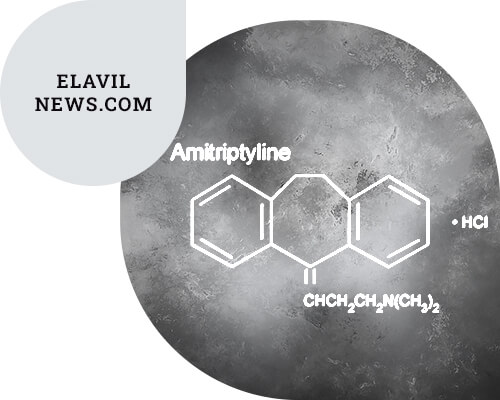The historical excursus on tricyclic antidepressants (TCAs) continues the series of analytical studies of events in the history of psychopharmacotherapy. We have previously systematized data from the history of selective serotonin reuptake inhibitors (SSRIs), multimodal serotoninergic antidepressants, serotonin and noradrenaline reuptake inhibitors (SNRIs), and atypical neuroleptics. In working on the present study, we have been confronted to a greater extent than previously with the problem of conflicting opinions in describing historical events, especially in the contemporary literature. Many of these disagreements have been resolved, if possible, with the help of a study of primary literary sources. The reader's assistance in determining the accuracy of the facts presented will be appreciated. The present historical excursus is important not only from a general cognitive point of view, but also from the perspective of a better understanding of the current state of mental health therapy, and of the experience that can be drawn from the nearly 70-year history of the TCA.
The emergence of the first TCAs imipramine and amitriptyline and the beginning of their use in the treatment of depression (late 1940s - early 1970s)
The experimental compound G-22355, which was later named imipramine and gave rise to the group of TCAs, was synthesized by chemists of the Swiss pharmaceutical company "Geigy" F. Häflinger and W. Schindler at the turn of the 40's and 50's in the process of searching for new drugs among tricyclic compounds - iminodibenzyl derivatives. The first studies showed that the use of some of them developed sedative, antihistamine, analgesic and antispasmodic effects. However, the interest of Geigy management in this group of compounds soon waned. Evaluation of their clinical effects resumed only in 1956 after the news appeared that the use of the tricyclic compound chlorpromazine improved the condition of patients with schizophrenia. After this event, the company's employees again turned their attention to previously created compounds from the group of iminodibenzyl derivatives, hoping to discover new drugs with effects similar to those of chlorpromazine.

Because of the great similarity in the structure of imipramine and chlorpromazine molecules (identical in the structure of the side chain and different in the structure of the tricyclic core), imipramine was chosen for testing in the treatment of schizophrenic patients. Initially its clinical effects were investigated by physician R. Kuhn in a Swiss psychiatric clinic located in the commune of Münsterlingen. The therapy proved to be ineffective in schizophrenic patients. However, a positive effect was noted in the treatment of patients with depressive symptoms. As R. Kuhn, he deliberately avoided using rating scales in the study, and relied only on the clinical experience of doctors and nurses. This example vividly illustrates the fact that in the past, correct conclusions about the effects of drugs were made by ordinary doctors on the basis of observational observations without the use of evidence-based medicine methods that did not exist at the time.
The history of studying the clinical effects of imipramine in the 1950s by R. Kuhn and others has been well described, including most recently. It is inexpedient to duplicate these data within the framework of this article. One study was conducted by the Swiss psychiatrist J. Angst. From a vivid interview he gave in 2012, it is evident what enthusiasm psychiatrists in the 1950s had for research work.
At the end of 1957 imipramine became available for use in Switzerland under the trade name Tofranil, and the following year in other European countries. In the United States it began to be used in 1958. The use of imipramine in the USSR began about the same time as its distribution abroad. At first the drug produced by "Geigy" was used. Soon, under the leadership of M.D. Mashkovsky, employees of the Ordzhonikidze All-Union Research Chemical-Pharmaceutical Institute (VNIKhFI) themselves synthesized the imipramine molecule. After that it began to be used in our country in the form of the domestic drug imisin.
Imipramine was the progenitor of the TCA group and the first TCA with stimulant effects. Attention to imipramine has not waned to this day. It is still used in clinical practice. Often imipramine is used as a means of comparison in studies of the clinical effects of new antidepressants. In recent decades, reviews on the history of the discovery and use of imipramine and biographical sketches on the pioneers in the study of its effects have been published many times. Just a few years ago, the first article by R. Kuhn, devoted to the results of research on the clinical effects of imipramine, was translated into English.
The second TCA to appear at the disposal of psychiatrists was amitriptyline. In 1960, in the hope of obtaining a new antidepressant, specialists of the Swiss pharmaceutical company "Hoffmann-La Roche" synthesized the experimental compound Ro 4-1575 by modifying the imipramine molecule. At the same time, a molecule of the same chemical structure was created in the laboratory of the Danish pharmaceutical company Lundbeck. In the USA, amitriptyline was synthesized several years earlier than in Europe. In 1958, in the process of searching for new neuroleptics, the specialists of the American pharmaceutical company "Merck" modified the molecule of one of the compounds with thioxanthene nucleus and synthesized the substance MK-230. Subsequently, all these compounds received the international nonproprietary name (INN) amitriptyline.
In the USA, amitriptyline was first used by F. Ayd at Franklin Square Hospital in Baltimore and established its antidepressant activity. The first reports on the clinical effects of amitriptyline appeared in the scientific periodicals in the very early 60s. In 1961, amitriptyline became available for general use by Hoffmann-La Roche under the name Laroxil and by Lundbeck under the name Saroten. In the United States, it was approved for use in the treatment of depression in 1961 under the trade name Elavil. All of these drugs were manufactured as the chemical compound amitriptyline hydrochloride.
Soviet psychiatrists began using amitriptyline much later than their foreign colleagues. It happened only in the late 1960s. Back in 1967, in the 6th edition of the manual "Drugs" M.D. Mashkovsky did not mention any TCAs (including amitriptyline) other than imipramine. A gap of almost 10 years between the beginning of amitriptyline use abroad and in our country is a significant lag for that period. Chlorpromazine and imipramine, introduced into clinical practice earlier, became widely used in the USSR almost simultaneously with the beginning of their widespread use abroad.
I.N. Mikhalenko and Y.L. Nuller were among the first psychiatrists to describe their own experience with amitriptyline use in the USSR, as members of the V.M. Bekhterev Research Psychoneurological Institute (NIPNI). In 1964 they presented the results of treatment with monoamine oxidase inhibitors (MAOIs), melipramine and amitriptyline in an article entitled "Differential Therapy of Endogenous Depression." Paradoxically, but in another paper in 1966, Y.L. Nuller wrote: "There is considerable" (foreign) "literature on the good results in the treatment of anxious depression with amitriptyline, to the conclusions of which we are forced to refer, not having our own experience of using this antidepressant. In 1970, 2 preparations of amitriptyline manufactured in Yugoslavia and Czechoslovakia, tryptizol and amitriptyline, were available for wide use in the USSR.
In the second half of the 60s, amitriptyline maleinate (a compound of amitriptyline with maleic acid) was synthesized in our country. It differed from amitriptyline hydrochloride by a higher relative molecular weight, so it was used in higher doses. One of the first reports on its clinical effects was published by I.N. Mikhalenko and Y.L. Nuller in 1967. Its pharmacological properties were described by the Latvian pharmacologist S.K. Germane. In the early 70's amitriptyline maleinate was authorized for wide use in the USSR in the form of the drug damylene.
The creation of amitriptyline brought a significant innovation in the treatment of patients with depression. It was quickly found that due to its pronounced sedative effect its use was much more effective in treating patients with anxiety depression than therapy with other antidepressants that were available to psychiatrists at the time: imipramine and IMAO. Amitriptyline became the ancestor of the sedative antidepressant group. To this day it is considered the gold standard in research on the clinical effects of new antidepressants.
Significant expansion of the TCA group and the beginning of the use of clomipramine in the treatment of neurosis (1960s-70s)
Following the discovery of the ability of imipramine and amitriptyline to attenuate the manifestations of depression, new TCAs were introduced into clinical practice. More than 10 (desipramine, trimipramine, melitracene, opipramol, nortriptyline, protriptyline, doxepin, dibenzepine, iprindol, clomipramine, dimethacrine, butriptyline, noxriptyline) and more than 5 (amoxapine, maprotiline, lofepramine, metapramine, quinupramine, amineptine) representatives were registered in the 1960s. Many of them, despite the appearance of new generations of antidepressants, are still widely used to treat patients with depression and other psychiatric and even somatic diseases.

In the history of TCAs introduced into practice in the 60s-70s, the history of clomipramine deserves a separate description. In 1964, Geigy specialists synthesized the experimental drug G-34586. Initially it was known as "Chlorimipramine". In 1967 it was given the INN "Clomipramine". In the same year, clomipramine was officially approved for the treatment of depressed patients in Europe. In the United States, it was not available for use for another two decades. Its use was approved only in 1989, after conducting its own phase 3 clinical trials in the treatment of patients with obsessive-compulsive disorder (OCD). Clomipramine was the first antidepressant officially approved for the treatment of OCD patients in this country. Prior to that time, North American psychiatrists had tried to treat such patients with imipramine and amitriptyline (without official approval from the pharmaceutical market regulators). The use of clomipramine for the treatment of depressed patients in the United States has not yet been approved.
In 1967, French psychiatrist J. Guyotat and his colleagues were the first to discover that clomipramine effectively relieved obsessive-phobic symptoms. The same year similar results were published by Spanish specialists C. Fernandez and J. Lopez-Ibor. Further the management of "Geigy" became the initiator of new more large-scale researches. Their number progressively increased in the 70's and quickly equaled the number of studies dedicated to assessing the effectiveness of therapy for patients with depression. The results of most of the new studies demonstrated the effectiveness of the treatment of patients whose condition was determined by the obsessive-phobic symptomatology. As a result, the indications for the use of clomipramine were officially expanded. One more important result of studying the effectiveness of clomipramine therapy in patients with obsessive-phobic symptoms was the improvement of the methodology of research in this group of patients. Up to that moment, it was in its infancy. At the time of the study of clomipramine's anti-obsessive effects, psychiatrists had only one rating instrument to assess the severity of obsessive-phobic disorders, the Leyton Obsessional Inventory. The discovery of clomipramine's ability to attenuate obsessive-phobic symptoms was the impetus for the development of new rating scales and questionnaires. Finally, data on the effectiveness of clomipramine in the treatment of patients with obsessive-phobic disorders and the discovery of its powerful ability to inhibit serotonin reuptake led to the formulation in 1977 by the American specialist J. Yarvura-Tobias. Yarvura-Tobias et al. in 1977 formulated the serotonergic theory of the pathogenesis of OCD.
In our country, clomipramine began to be used much later than in Western Europe, and slightly later than in the United States. In 1988, the authors of a manual on psychiatry, edited by G.V. Morozov, wrote that "clomipramine was not widespread in the USSR. However, already in the 90's it became available for use in the CIS countries and was included in pharmacological handbooks. One of the first domestic psychiatrists, who provided the most complete information on its clinical effects, was A.A. Neduva. He considered clomipramine as the most powerful antidepressant with stimulant and mild anxiolytic effects. Clomipramine is still widely used in Russia for treatment of patients with depression and neurosis.
Along with clomipramine from TCAs created in Western countries in the 60s - 70s, domestic psychiatrists used trimipramine and desipramine. In the 1980s, trimipramine was available for use in the USSR. But then, according to A.A. Neduva's recollections, "it was undeservedly pushed out of our practice." It reappeared in Russia in the 1990s. At the same time, domestic psychiatrists began to use desipramine, although some of them already had experience with its use. In the first half of the 60s, I.P. Lapin used desipramine as a comparison antidepressant in studying the effects of drugs - iminodibenzyl derivatives, created by employees of the department of dye technology of the Lensovet Institute of Technology. The samples of desipramine used in the study were obtained by him from a North American colleague. In the 1990s, the German pharmaceutical company Arzneimittelwerk Dresden GmbH (AWD), which produced generics of clomipramine, trimipramine, and desipramine, was actively marketing them in Russia. In 1995, a symposium on its "product line" was held. That same year, in the journal Social and Clinical Psychiatry, A.A. Neduva presented a review article on the three antidepressants produced by AWD. In addition to the experience with trimipramine and desipramine, domestic psychiatrists had the opportunity to study the clinical effects of opipramol, melitracene, dibenzepine, and doxepin. Last on this list was maprotiline, which stopped being imported into Russia by the manufacturing company only recently, in 2010.
Creation and improvement of classifications of TCAs (1960s-present)
The issue of the need to classify TCAs became topical in the early 1960s, when psychiatrists had several of their representatives at their disposal. The first classification was notable for its simplicity. It was based on peculiarities of chemical structure, and the term "TCA" was not yet used in it. In 1962, E.J. Sternberg and J.A. Alexandrovsky et al. distinguished three groups of TCAs: "iminodibenzyl derivatives" (imipramine), "amitriptyline derivatives" (amitriptyline proper), and "some phenotyazine derivatives" (levomepromazine). This classification was used by psychiatrists for some time and even made its way into psychiatric textbooks in the early 1970s. By the mid-1960s, the chemical classification had become considerably more complex. In 1966, I.P. Lapin already distinguished 5 groups. The unwieldiness of this taxonomy and the impossibility to relate it to the specific clinical effects of one or another drug predetermined the fact that it did not become popular. It has been superseded by other classifications.

In the 1960s, TCAs began to be subdivided into tertiary and secondary amines based on their chemical structure. After the end of the TCA period, the group of tertiary amines turned out to be more numerous than the group of secondary amines. Initially, this division was based solely on the chemical principle. However, later, evidence emerged about the difference in their neurochemical and clinical effects. At the turn of the 1970s and 1980s, it became apparent that the tertiary amines (imipramine, amitriptyline) block serotonin reuptake to a greater extent and have a greater severity of sedation and cholinolytic side effects, while the secondary amines (desipramine, nortriptyline) inhibit noradrenaline reuptake to a greater extent and have a greater stimulating effect and a lower severity of cholinolytic activity. Tertiary amines were also found to have greater antidepressant activity than secondary amines. The practical significance of these data was the recommendation to start therapy with secondary amines. In case of their ineffectiveness the use of tertiary amines was recommended.
In the first half of the 1960s, P. Kielholz proposed to arrange the antidepressants in a sequential series based on the ratio of stimulant or sedative effects in the spectrum of action of each of them. Such systematics became very popular, including in our country. It was called "Kilholtz scheme". For many years, Kilholtz's scheme was fundamental in describing the differences in the clinical effects of different TCAs. Over time, it was modified (probably for ease of perception rather than practical reasons) into a classification that distinguished two groups: stimulant and sedative antidepressants. It was then expanded to include a 3rd group, balanced antidepressants. After the new generations of antidepressants (especially SSRIs, SSRIs) were introduced into clinical practice in the 1980s and 1990s, which were difficult to attribute clearly to one of the groups listed, the validity of the Kilholtz scheme was repeatedly criticized. However, with respect to the systematics of TCAs, its application still seems justified.
Another classification was to divide TCA into groups of "typical" and "atypical" representatives. It was based primarily on a neurochemical approach. The term "atypical" TCA was used when it became clear that the neurochemical activity of some TCAs differed from the neurochemical effect of most representatives of this group - "typical" TCAs - by simultaneously inhibiting serotonin and noradrenaline reuptake. In practice, this was manifested by the fact that the spectrum of clinical effects of each of the "atypical" TCAs differed from the standard spectrum of clinical activity of typical TCAs. The possibility of dividing TCAs into "typical" and "atypical" appeared only after the introduction of methods that made it possible to subtly study the neurochemical mechanism of their action. At the turn of the 1970s and 1980s, the terms "typical" and "atypical" TCAs were already widely used abroad. In our country, in the 8th edition of the "Drugs" handbook, compiled in 1977 by M.D. Mashkovsky, no mention of typical and atypical TCAs was made. However, in the 9th edition, published in 1984, the author already used this terminology. In recent decades, when classifying antidepressants, typical TCAs are usually referred to by the term "TCAs - non-selective monoamine reuptake inhibitors. Atypical TCAs are assigned to different neurochemical groups based on the action predominant in their spectrum of neurochemical activity, such as noradrenergic, serotonergic, or dopaminergic antidepressants.
Appearance of original Soviet TCAs chloracyzine, fluacyzine, pipofezine and their further fate (late 50's of XX century - present)
The first Russian original tricyclic compound with antidepressant activity, chlorazine, was synthesized in the late 50's at the Institute of Pharmacology and Chemotherapy by S.V. Zhuravlev and A.N. Gritsenko. The structure of the core of its molecule completely corresponded to the structure of the core of chlorpromazine molecule, but they differed in the structure of the side chain. Initially, the pharmacological effects of chlorracyzine were investigated by Yu.I. Vikhlyaev and N.V. Kaverina. It turned out that chloracizin has no neuroleptic activity, but its use increases the volumetric coronary blood flow rate and prevents the development of experimental arrhythmias. In 1961 chloracizine began to be used in the USSR for treatment of patients with coronary heart disease. In 1962 the name "Chloracyzine" was officially accepted by WHO as INN.
At the beginning of the 60's an active study of psychotropic effects of chlorracyzine began. In 1961 E.L. Schelkunov recommended psychopharmacological testing of chloracizin as an antidepressant. It was carried out by him and other members of the laboratory of psychopharmacology of the V.M. Bekhterev Research Institute. It was found that chloracizin, as well as imipramine, has central "adrenoppositive" and cholinolytic action. Based on these findings, it was proposed to conduct clinical trials of chloracizin as an antidepressant.
The study of clinical effects of chloracizin was conducted in the clinic of the V.M. Bekhterev Research Institute. The results were presented in the middle of the 60's by A.A. Bazhin and Y.L. Nuller from the department of geriatric psychiatry and the department of experimental therapy of psychoses. The authors came to the conclusion that treatment is most effective for "non-serious endogenous depressions" and "depressive states of vascular genesis". It was found that moderate atropine-like effects develop during therapy.
Domestic pharmacologists and internists referred chloracizin to the group of "antispasmodic and hypotensive agents", but pointed to the presence of an antidepressant effect in the spectrum of its clinical activity. Domestic psychopharmacologists and psychiatrists classified chloracizin as an antidepressant - a phenothiazine derivative. In the middle of the 60s I.P. Lapin, the head of the Laboratory of Psychopharmacology at the V.M. Bekhterev Research Institute of Psychopharmacology, placed chloracizine between IMAO and desipramine, i. e. referred it to stimulant antidepressants in his modified Kilholtz scheme.
Despite its antidepressant activity, chloracizin has not been widely used for the treatment of depression. In 1980, a psychopharmacology handbook stated that chloracizin was used in psychiatry for the treatment of depression developing as part of manic-depressive psychosis, involutional melancholia and vascular psychoses. However, as early as 1986 in the 3rd edition of the Great Medical Encyclopedia N.V. Kaverina described it exclusively as a cardiovascular agent. As indications for its use in psychiatry only "angina in patients with depression" was given.
In the 60's at the Institute of Pharmacology and Chemotherapy an original domestic TCA fluoroacizin was synthesized. The core of its molecule was identical to the core of chlorpromazine molecule, except that in one position of three-membered cycle chlorine atom was replaced by trifluoromethyl group. In 1971, the WHO gave fluoroacizine the INN Fluacizine. In 1965 Yu.I. Vikhlyaev and other employees of the Institute of Pharmacology and Chemotherapy applied for an invention, the subject of which was defined as "application of fluoracizin as an antidepressant". In 1969, fluacyzine was approved for widespread use in the USSR in the form of oral and parenteral forms. In 1972, in the 7th edition of the manual for physicians "Drugs" M.D. Mashkovsky already described fluacizin in detail (along with three other TCAs - imipramine, amitriptyline and pipofezine).
Fluacizine was characterized as an antidepressant with a moderate thymoleptic effect (weaker than other TCAs) and pronounced sedative/antianxiety and cholinolytic effects. These features determined the possibility of its use in anxious (but not inhibited) depression. It was noted that unlike other TCAs, fluazizin therapy does not exacerbate productive symptoms in patients with schizophrenia and contributes to attenuation of depressive affect in neuroleptic depression. A strong cholinolytic effect allowed to use fluacizine as a corrector of extrapyramidal symptomatology. After the collapse of the USSR, fluacizine was used for some time in Russia, Ukraine, and some other CIS countries.
In the 1960s, the search for new antidepressants was conducted in the laboratory headed by M.N. Shchukina at VNIIHFI under the direction of M.D. Mashkovsky. Tricyclic compounds-diazaphenoxazine derivatives-were synthesized. One of them - the original domestic antidepressant pipofezine - was obtained in 1969. In 1978, WHO approved this name as an INN. Many modern authors point out that pipofezine was the first original domestic antidepressant; however, an analysis of the historical facts shows that this is not the case.
M.D. Mashkovsky and his colleagues showed that pipofezine had psychopharmacological properties typical of other antidepressants. It was found that unlike other TCAs, pipofezine does not cause a cholinolytic effect. Its toxicity has been reported to be 2 times lower than that of imipramine.
Studies of the clinical effects of pipofezine indicated that the strength of its antidepressant activity was relatively low. In 1975 G.Y. Avrutsky wrote that in strength of its antidepressant effect pipofezine is inferior to imipramine and amitriptyline. It was recommended for use in mild to moderate depression. A notable observation was that the use of pipofezine in patients with schizophrenia did not cause exacerbations of schizophrenia, expanding the possibility of safe treatment of schizophrenic depression.
Pipofezine was approved for use by the Ministry of Health of the USSR in 1970 as the drug azaphene and was used in clinical practice for several decades. As N.N.Shinaev, the chief doctor of Moscow psychiatric hospital № 8 (Clinic of neurosis) later recollected, "in the 70- 80-s of the XX-th century, pipofezine was prescribed for the overwhelming number of patients who had indications for antidepressant therapy. After disintegration of the USSR, pipofezine was produced by the pharmaceutical enterprise Moskhimfarmpreparaty. However, in 1997 its production was discontinued. According to N.N. Shinaev's recollections "...for several years at symposiums and conferences on therapy of borderline mental disorders, many speakers nostalgically recalled the drug with kind words and regretted its absence".
In 2005, the domestic pharmaceutical company "Makiz-Pharma" resumed production of pipofezine. During this period the manufacturer began its active marketing. As a result, new open studies of its clinical effect were conducted in Russia. Their results confirmed the data obtained in the XX century. A large number of new articles were published in the periodical scientific press. In 2007 N.N. Ivanets and other employees of the National Scientific Center of Narcology published the results of a blind placebo-controlled study of effectiveness of pipofezine in the treatment of affective disorders in patients with alcoholism - a rare example of conducting research in accordance with the principles of evidence-based medicine for Russia. In 2007, for the first time in Russia, a dosage form of prolonged action of pipofezine was registered. In 2008, N.A. Tyuvina and other employees of the Department of Psychiatry and Medical Psychology of the Sechenov Moscow Medical Academy and the Department of Psychiatry and Medical Psychology of the Russian Academy of Sciences. I.M. Sechenov Moscow Medical Academy were among the first to publish the results of an open study of the clinical effect of this form of pipofezine.
TCAs created in the USSR were not widely used outside of our country. The reason for this, rather, was the inability of the pharmaceutical market of an economically and politically "closed" state to compete with the developed pharmaceutical industry of Western countries, rather than the competitiveness of the drugs themselves. This is evidenced by the fact that after the collapse of the Soviet Union, the Soviet-developed antidepressant pirlindol, a group of ICAOs, began to be used in Western Europe.
Creation of TCAs in the Eastern European countries of the socialist camp and further fate of their representatives: dosulepine and other TCAs (1957-60s)
The state pharmaceutical organizations of the Eastern European countries of the socialist camp were not left out of the process of creating TCAs. The leader among them (with the exception of the USSR) was Czechoslovakia. Several TCAs synthesized in this country are known.
Dosulepine is the most popular. It was synthesized in 1962 by employees of the Department of Pharmacology at the Medical Institute of Hygiene and the Research Institute of Pharmacy and Biochemistry in Prague M. Rajsner and M. Protiva. In the same year, one of the first reports of its effects was published in the scientific periodicals. Dosulepine molecule was identical to amitriptyline molecule except that in one of the positions of the three-membered cycle the carbon atom was replaced by a sulfur atom. In 1965, this antidepressant was given the INN Dosulepine. It was also known under the name "Dothiepin". The first clinical studies showed the presence of "anxiolytic effect" in the spectrum of its psychotropic activity. Dosulepine soon gained wide acceptance. In 1970, Geigy collaborator W. Theobald listed dosulepine among other TCAs, including those created by the company for which he worked.
Initially, dosulepine was produced by the Czechoslovak pharmaceutical company SPOFA in the form of the drug protoaden, and later it was produced by the Czech pharmaceutical company Lechiva. Pharmaceutical companies in other countries, such as Boots and Knoll, produced generic drugs. Dosulepine became widely used to treat patients with depression and anxiety disorders in many countries and is still used today. It was not approved for use in the United States.
Soviet psychiatrists used dosulepine in their practice. In 1974, G.Y. Avrutsky et al. described in detail the clinical effect of dosulepine, attributing it to sedative antidepressants, in an edition of a manual on psychopharmacotherapy. The authors noted that its thymoanaleptic effect was weaker than that of amitriptyline, but stronger than that of fluorazizine and trimipramine. However, there was no description of dosulepine in the manuals of the same authors published in 1981 and 1988. Apparently, it was no longer used in the USSR at that time. Nevertheless, in 1987 A.B. Smulevich still described doculepine as a "narrow spectrum" antidepressant effective for mild depression. In the late 1990s, dosulepine was apparently used in Ukraine and was included in Ukrainian handbooks on psychopharmacology with the indications: "depression, nocturnal urinary incontinence, preparation for surgery of patients with elevated levels of anxiety."
Besides dosulepine, Czechoslovak pharmacologists created a number of other TCAs. However, information about them in the literature is rather scarce. In 1957 (i.e., 5 years before dosulepine was created), M. Protiva and other members of the Department of Pharmacology of the Medical Institute of Hygiene and the Research Institute of Pharmacy and Biochemistry synthesized prodazepine. In 1961 data were presented on the similarity of the pharmacological activity of propazepine and imipramine. Over the next 10 years, Czechoslovak scientists regularly published new information on the pharmacological and clinical effects of propazepine. Interestingly, in the mid-60s, i.e. a few years before the formulation of the serotonergic theory of the pathogenesis of depression, the Czechoslovak researcher K. Ryšánek made a targeted study of the effects of propazepine on the serotonergic system. In 1965, propazepine was assigned the INN "Prazepin." In 1966, I.P. Lapin mentioned propazepine in his proposed classification of antidepressants, combining it with imipramine, desipramine, and trimipramine in the group of TCAs, iminodibenzyl derivatives. The last report on propazepine that could be found in the scientific periodicals dates back to 1970. After reviewing the literature, it remained unclear whether propazepine was used in general clinical practice or whether its use was limited to clinical trials. Also in the 1960s, several studies on the effects of proheptatrien were published in Czechoslovakia. In 1981, J.L. Nuller referred to this antidepressant when describing the TCA group. It has probably never been widely used.
Study of the effect of TCA on the monoaminergic system and the emergence of the idea of the rationality of creating antidepressants with a "dual" mechanism of action (1959-70s of the 20th century)
The first researcher to establish the effect of TCA on the monoaminergic system was E. Sigg. In 1959 he showed that imipramine, like cocaine, enhances the effect of norepinephrine. Although this discovery was made in tests on peripheral tissues of laboratory animals, it formed the basis for the notion that the action of TCA was due to "sensitization of central adrenergic mechanisms." Psychiatrists of that period repeatedly referred to the "hypothesis," or "Sigg's scheme. Later the phenomenon described by E. Sigg was used as a test in evaluating the pharmacological properties of potential antidepressants. In 1961, the American biochemist J. Axelrod and his colleagues from the National Institute of Mental Health in experiments on laboratory animals showed that imipramine inhibits the "assimilation" of noradrenaline by nerve endings of various tissues. Studies by J. Axelrod has made a great contribution to the development of the concept of the noradrenergic effect of antidepressants. In 1970 he was awarded the Nobel Prize in Physiology or Medicine for his research of the "circulation" of adrenaline and noradrenaline in the synapse.
For many years, the theory of the effect on the noradrenergic system of the brain became the basic theory in explaining the mechanism of implementation of the antidepressant effect of TCA. In 1966 R.J. Vovin wrote: "there is a temptation to assume that the common denominator of antidepressant activity consists in the activation of central adrenergic mechanisms". During this period the importance of serotonin in the mechanism of action of TCA was not evaluated. In the middle of the 60's I.P. Lapin expressed the following opinion: "...it is impossible to eliminate depressive mood by strengthening serotonin-related processes. The importance of the effect of TCA on the serotonergic system would be recognized a few years later by historical irony due to the work of the same I.P. Lapin. In 1969 he and his student G.F. Oksenkrug published an article "Intensification of the central serotoninergic processes as a possible determinant of the thymoleptic effect" in the Lancet. I.P. Lapin's discovery was a great progress for the development of Soviet psychopharmacology and psychiatry. Prior to that period, for many years Russian specialists in their researches were voluntarily or involuntarily guided mainly by I.P. Pavlov's reflex theory, which at that time was recognized as fundamental at the state level.











